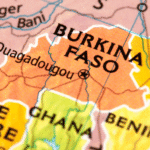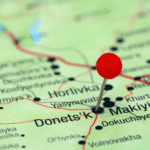Seventy-three people, including 17 children, have died in a terrible traffic accident in western Afghanistan. Afghan deportees who had just returned from Iran made up the majority of the victims. A bus struck a truck and a motorcycle before catching fire in Herat province, resulting in a deadly collision.
The bus was leaving the border town of Islam Qala, a crucial crossing point for Afghans ejected from Iran, and heading toward Kabul. All of the passengers were migrants who had been forcibly back to Afghanistan, according to local police. Two occupants of the other vehicles also perished in the collision.
This tragedy occurs as worries about the wholesale expulsion of Afghans and the mounting strain on the country’s delicate social structures and infrastructure are escalating.
What Led to the Deathly Mishap?
The crash happened in the province of Herat on Tuesday evening. According to preliminary findings, the bus driver may have contributed to the collision by speeding and disregarding traffic laws. In Afghanistan, these kinds of accidents are frequent due to poor road conditions and lax enforcement of safety laws.
Much of the nation’s infrastructure is in poor condition due to decades of war, and traffic-related catastrophes usually claim a large number of lives. Here is the link to our article on Deportation Struggle Resolved.
Why Are Deportees from Afghanistan Being Made to Return?
Deportations of Afghans without documentation have increased recently in Iran. Concerns about Tehran’s national security, particularly in light of its brief confrontation with Israel earlier this year, prompted the action. According to Iranian officials, these deportations are required for stability at home.
Critics counter that the migrants from Afghanistan are being unfairly blamed. Numerous individuals who were evicted had been residents of Iran for many generations and made substantial contributions to the local economy.
The United Nations reports that since January 2025, more than 1.5 million Afghans who were deported from Iran have returned. The rate at which forced returns are occurring has outpaced Afghanistan’s capacity to offer suitable housing, services, and jobs.
How Is the Inflow Being Handled in Afghanistan?
Local resources are being severely strained by the increasing number of Afghan deportees returning. Humanitarian organizations caution that Afghanistan’s infrastructure is insufficient to handle this unexpected surge in people.
The situation has gotten worse due to aid cuts. A large number of returnees experience food insecurity, homelessness, and restricted access to medical treatment. Returnees from Iran are joining those being forced out of Pakistan, putting pressure on the Taliban-led government.
To confront the escalating situation, officials and non-governmental organizations are calling for further international assistance. Here is the link to our article on the Trump Deportation Uproar.
What Are the Wider Consequences?
The risks encountered by returnees and the wider effects of regional migration policy are brought to light by this terrible event. Months have gone by since Iran’s deadline for undocumented Afghans to voluntarily depart. Mass deportations have increased since then, frequently without prior notice or due process.
Iran is seeing an increase in anti-Afghan sentiment, and the situation is being made worse by such actions in nearby nations.
These 73 people’s deaths highlight the human cost of forced migration and the pressing necessity for both domestic and international actors to respond in concert.
Final Thoughts
The tragic reality that many returnees must deal with is exemplified by the dozens of deaths in a preventable traffic accident, the majority of whom were Afghan deportees. Afghanistan’s already overburdened resources are about to collapse as deportations from Iran continue. The region’s political and humanitarian conditions could worsen if comprehensive support measures are not put in place right away. It must be a global priority to protect returnees’ lives and dignity.








